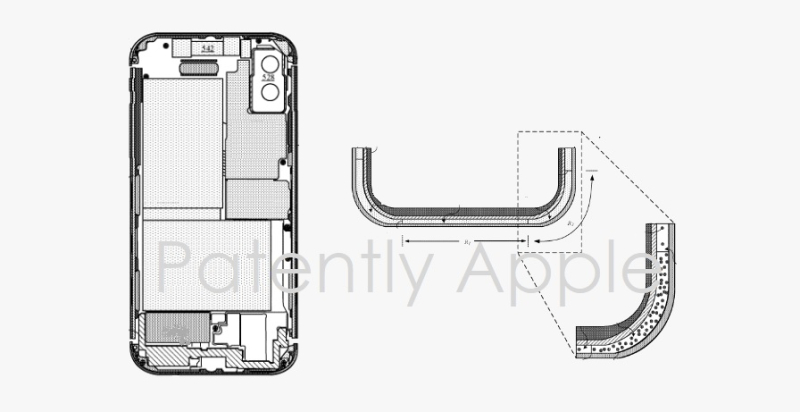The U.S. Patent and Trademark Office officially published a series of 67 newly granted patents for Apple Inc. today. In this particular report we cover next-gen protective cases for devices like an iPhone. The patent describes using new active electro-mechanical materials for protecting portable electronic devices. More particularly, the present embodiments relate to active magnetorheological or electro-active polymers that are capable of protecting portable electronic devices during a drop event.
Portable electronic devices may be manufactured from a variety of different materials, including glass, aluminum, stainless steel, and the like. These portable electronic devices may be carried by protective cases to protect the portable electronic devices from shock caused by a drop event.
Although recent technological advances have led manufacturers of protective cases to incorporate a variety of different protective materials to protect these portable electronic devices, these different materials are insufficient to fully protect the portable electronic devices under a variety of different circumstances.
Today’s protective cases use passive materials such as plastic, leather, etc. However, passive materials are limited in their ability to fully protect these portable electronic devices in a variety of circumstances.
In particular, the passive materials are characterized as having a static damping coefficient. Consequently, if the protective case is subject to an impact that exceeds a force threshold, then the passive materials are insufficient to protect the portable electronic device.
Therefore, there is a need to utilize active materials that are capable of adapting to these variety of different circumstances.
Apple’s granted patent describes next-gen cases could use active materials which include active electro-mechanical materials may be utilized as seals or gaskets while also preventing and/or minimizing moisture and air ingress into the portable electronic devices. In particular, the active electro-mechanical materials may be utilized to adapt an amount of damping (e.g., damping coefficient, etc.) required to sufficiently protect these portable electronic devices.
The case includes a housing having walls that define a cavity, where the walls are capable of carrying the portable electronic device within the cavity. The walls carry operational components that include a processor capable of providing instructions, a magnetic circuit capable of generating a magnetic field in response to receiving the instructions from the processor, and a magnetosensitive layer that includes (i) a matrix, and (ii) magnetic particles interspersed within the matrix according to a first distribution, where when the magnetosensitive layer is exposed to the magnetic field, the magnetic particles are rearranged according to a second distribution.
The active electro-mechanical material may be non-visible as the active electro-mechanical material is concealed by a cosmetic layer. Unlike the passive material, the active electro-mechanical material has an adjustable damping coefficient. In some examples, the active electro-mechanical material includes magnetorheological elastomers (MRE) or electro-active polymers (EAP).
When the active electro-mechanical material is exposed to an external stimuli (e.g., electrical field, magnetic field, etc.), then the active electro-mechanical material is activated. Subsequently, the stiffness or viscosity of the active electro-mechanical material is automatically altered.
Apple’s patent FIGS. 2A-2B below illustrate various views of an exemplary case for a portable electronic device that is capable of protecting the portable electronic device; FIGS. 3A-3B illustrate various views of an exemplary case for a portable electronic device that is capable of protecting the portable electronic device according to the techniques described in the patent.
2 x next-gen protective cases
Apple’s patent FIGS. 5-6 below illustrate exemplary portable electronic devices that include active electro-mechanical materials for protecting the portable electronic devices; IGS. 7A-7B illustrate exemplary protective seals for protecting portable electronic devices; FIG. 11 illustrates a flowchart of a method for establishing a damping characteristic of a protective seal for a portable electronic device.
3 x next-gen protective case
Apple’s granted patent that was originally filed in Q2 2019 was published today by the US Patent and Trademark Office.
Content retrieved from: https://www.patentlyapple.com/patently-apple/2020/09/apple-wins-patent-for-next-gen-iphone-cases-using-active-magnetorheological-polymers-for-vastly-superior-protection.html.

